Time Well Spent: Slowness & Making Meaning
What I learned when I was forced to slow down my art-making
One slow process leads to another, slower process
First Covid, and then chronic illness, forced a new slowness on every part of my life. With nowhere to be, with no energy to keep moving forward at breakneck speed, I was granted an opportunity to look around, to get to know the place - geographical and metaphorical - where I reside.
Without realizing it, I was moving along several parallel paths simultaneously, each process moving from fast to slow to even slower yet. This wasn’t an intentional choice – I was just trying to find ways to make continued work possible. I was just trying to find my way through grief and exhaustion and anxiety. I was, quite frankly, just trying to find a new way to be in the world.
Before chronic illness, I had been hiking miles each day in the woods near my home or in Brown County State Park. Once I became ill, I could walk neither as fast nor as far as I could before. Most days now I can make it only into the woods right behind my home, not traveling very far, but still spending a significant amount of time there when I go, which means I am moving more slowly, and standing or sitting still more often.
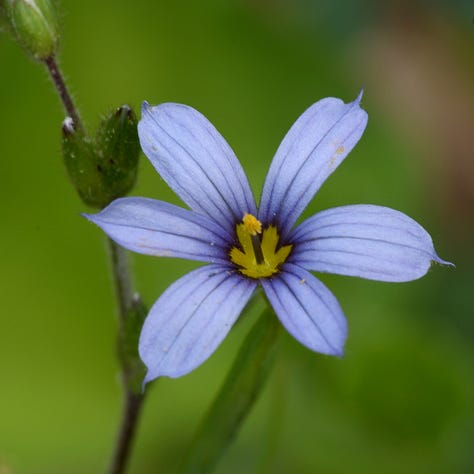
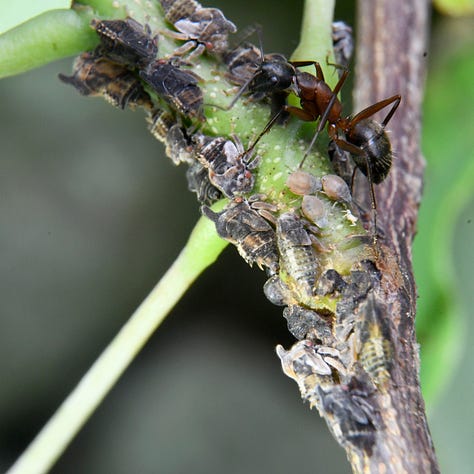
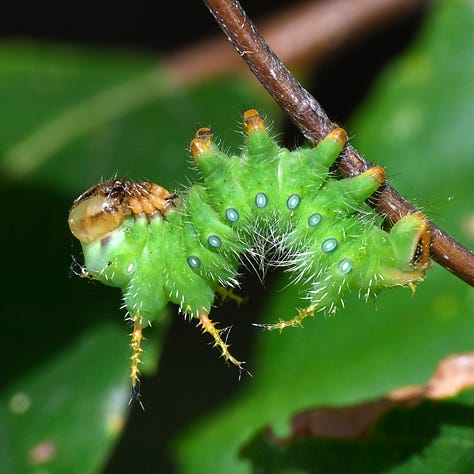
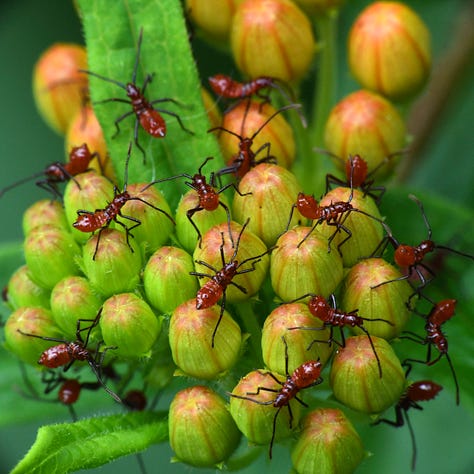
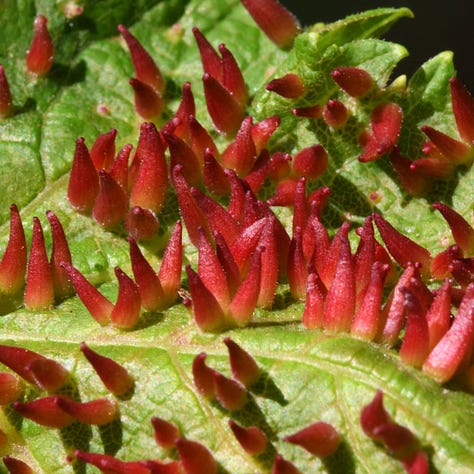
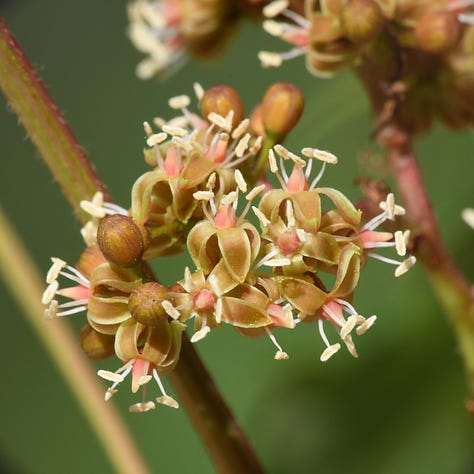
When I started walking more slowly, I noticed more. When I noticed more, I became more curious. When I became more curious, I asked more questions. From those questions, I opened up new ways of being in the world, new ways of working, and new ways of making art.
“Moving slowly allows us to read the signs the world is showing us.”
- Daniel Shkolnik, from Fast is Slow – Slow is Fast
Pre-covid and pre-illness, I used predominantly machine stitching in my work, in order to be able to make enough things to fill an art fair booth several times a year and to stock gift shops and galleries. I was semi-mass-producing work to meet the demands of the markets I had chosen, working more than full-time in the studio. I was buying raw materials in bulk to save time and money. I was proud of this work, and satisfied that it seemed to bring my customers joy.
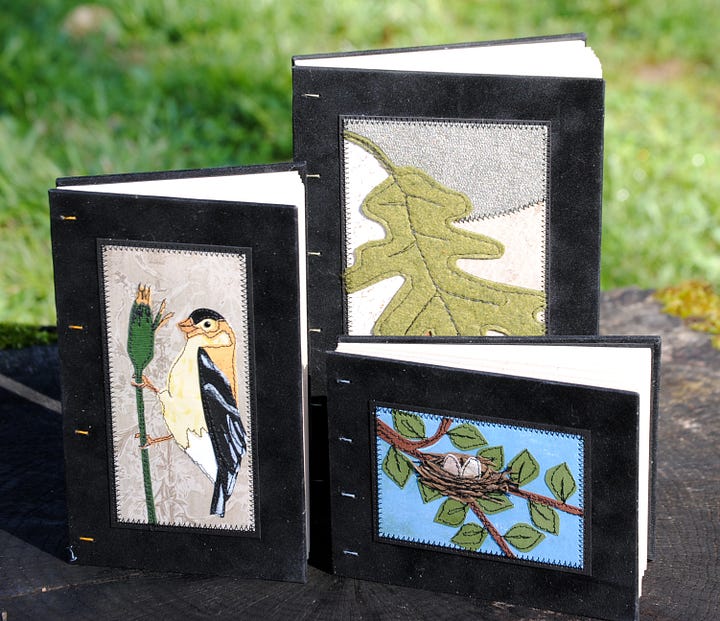
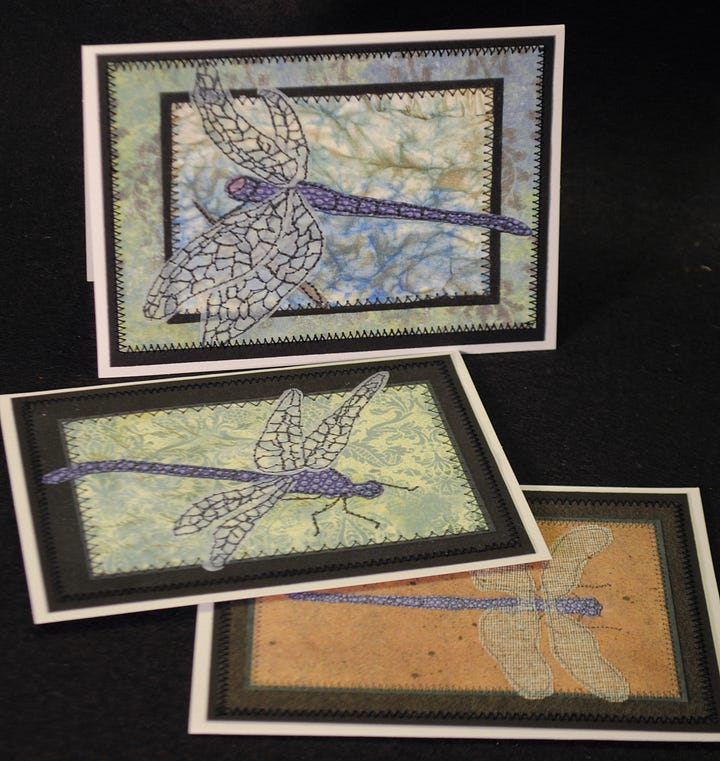

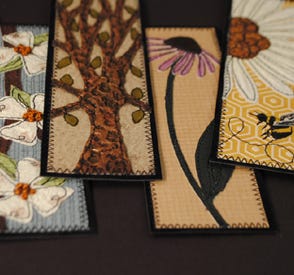
But then things changed. When free-motion machine stitching became too physically demanding on my body, and set off vestibular symptoms I was experiencing, I gradually incorporated more and more hand embroidery in my work.
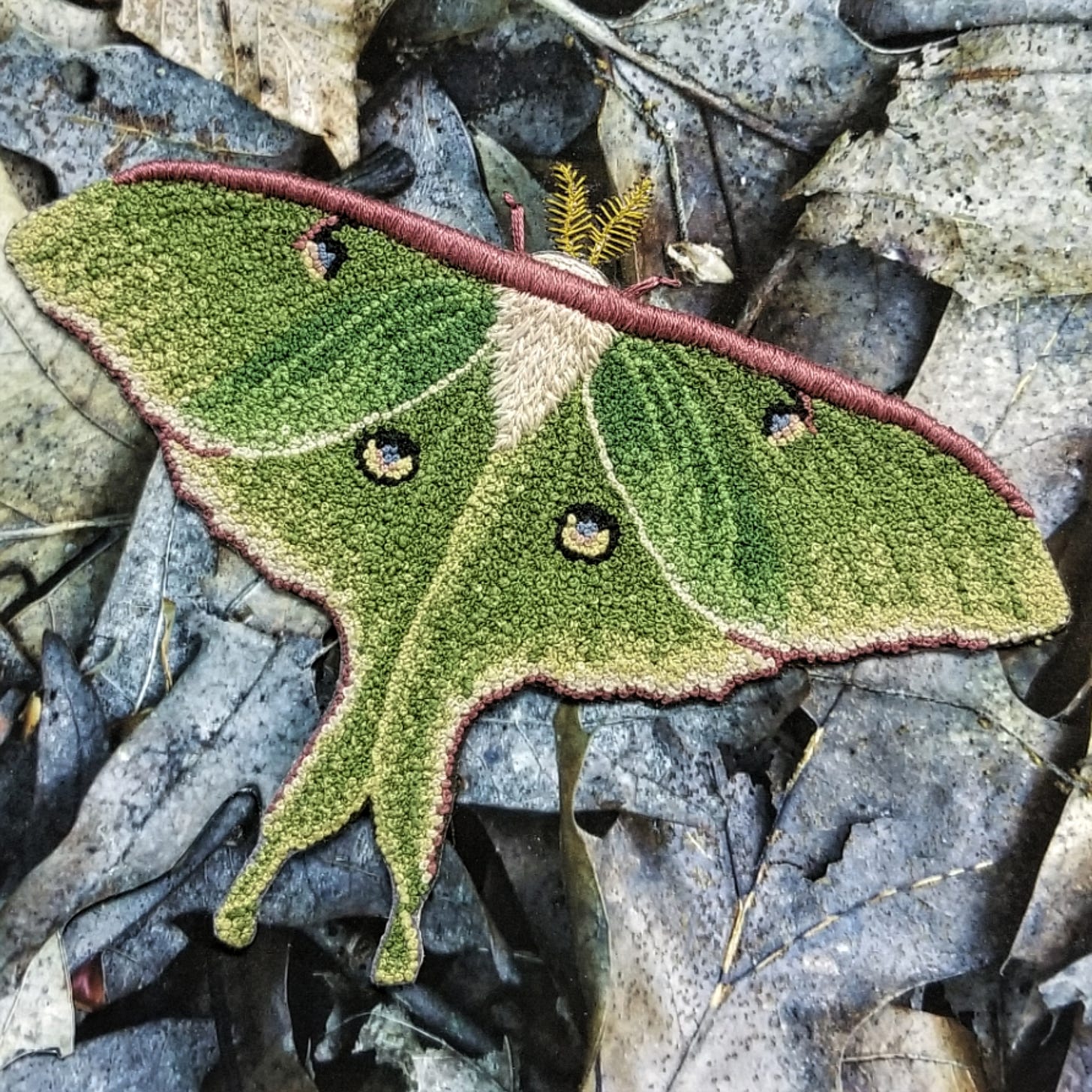
My body seemed grateful for this slower pace, this reduction in noise and movement. With no art fairs, I did not have to create as much inventory, so I was able to make more one-of-a-kind pieces. And I inherited a large quantity of DMC embroidery floss from several friends, and had lots of papers and materials leftover from hand bookbinding (which I could no longer do), so I wasn’t really buying any new materials.
As I sat with the needle and thread, drawing it again and again through the papers, slowly accumulating textures and colors, I had time to ask What if? What if I could reduce my purchase of raw materials to the bare minimum? What if I could recycle, forage and scavenge for most of what I need? I already had the embroidery threads – what about the papers? I pulled papers from my recycle bin and gel plate printed them instead of buying collage papers. I learned to eco-dye and eco-print papers with leaves from my woods.
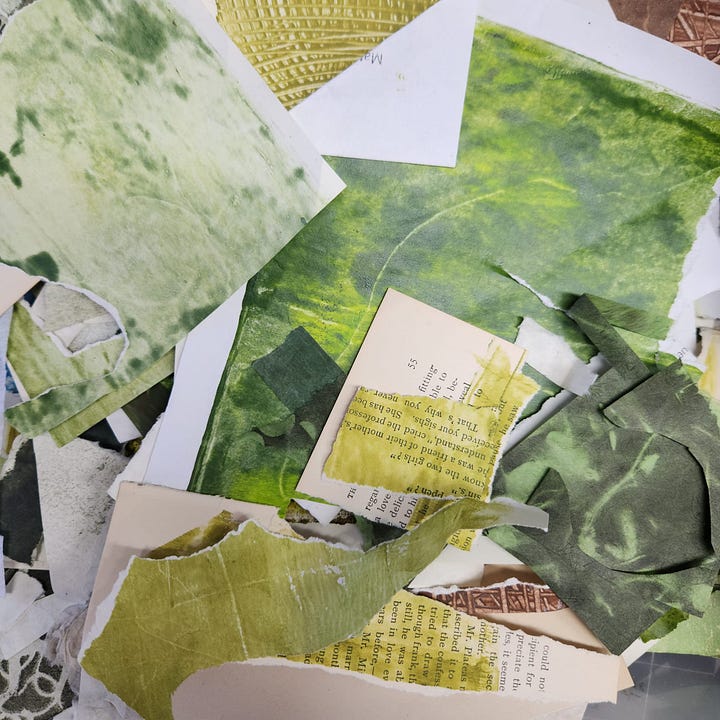
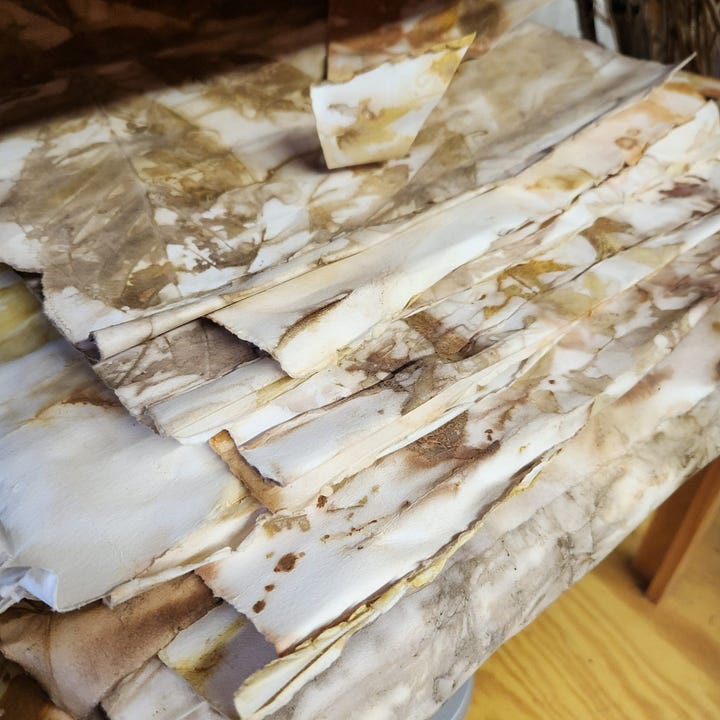
I foraged vines from the woods to use as frameworks in my artwork. I took field trips to the salvage yard to rescue rusted metal. I brought home old threads I found at a local antique mall. I began accumulating in my studio a different kind of raw material, one with history, memory, and significance.
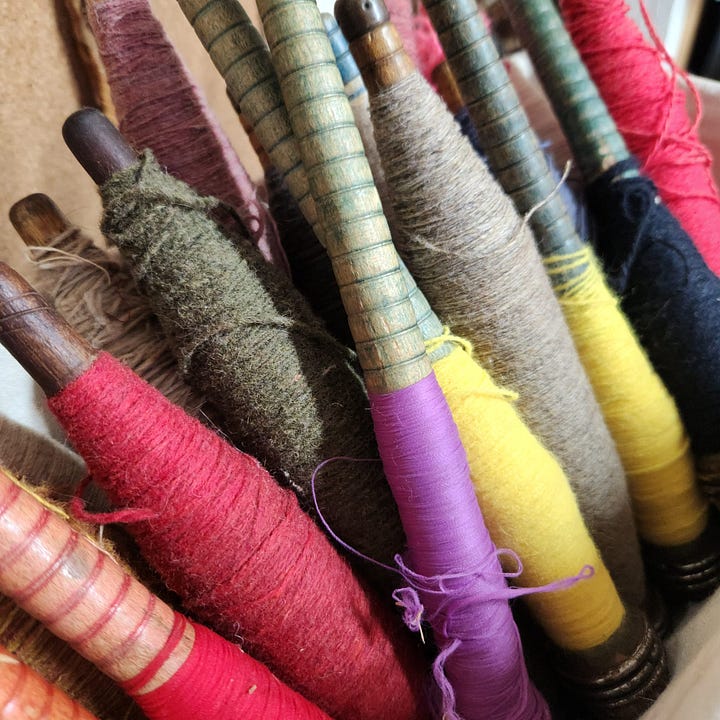
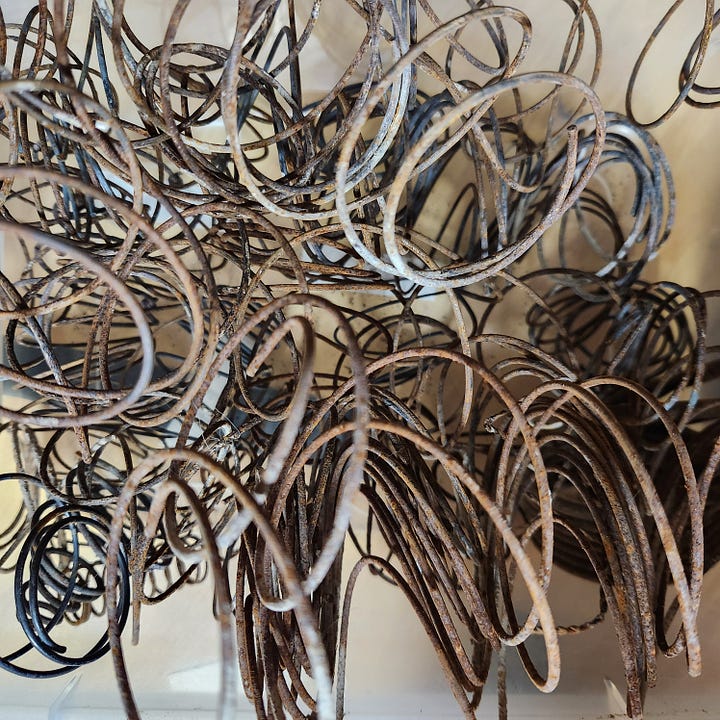
It was a much slower process, taking time to print or dye the papers before I sewed into them, or foraging for materials rather than ordering them online, but using these materials seemed to open up a space where I could make new meaning. The pieces I was making with these materials were more deeply felt, more embedded in time and place, and there was space for me to embed my own personal meaning into the artwork.
The work, perhaps also because it was made so much more slowly, at the speed of my thoughts and the speed of my hands, was both more interesting and more important to me. And I was also inspired to document this work in ways I had not in the past.
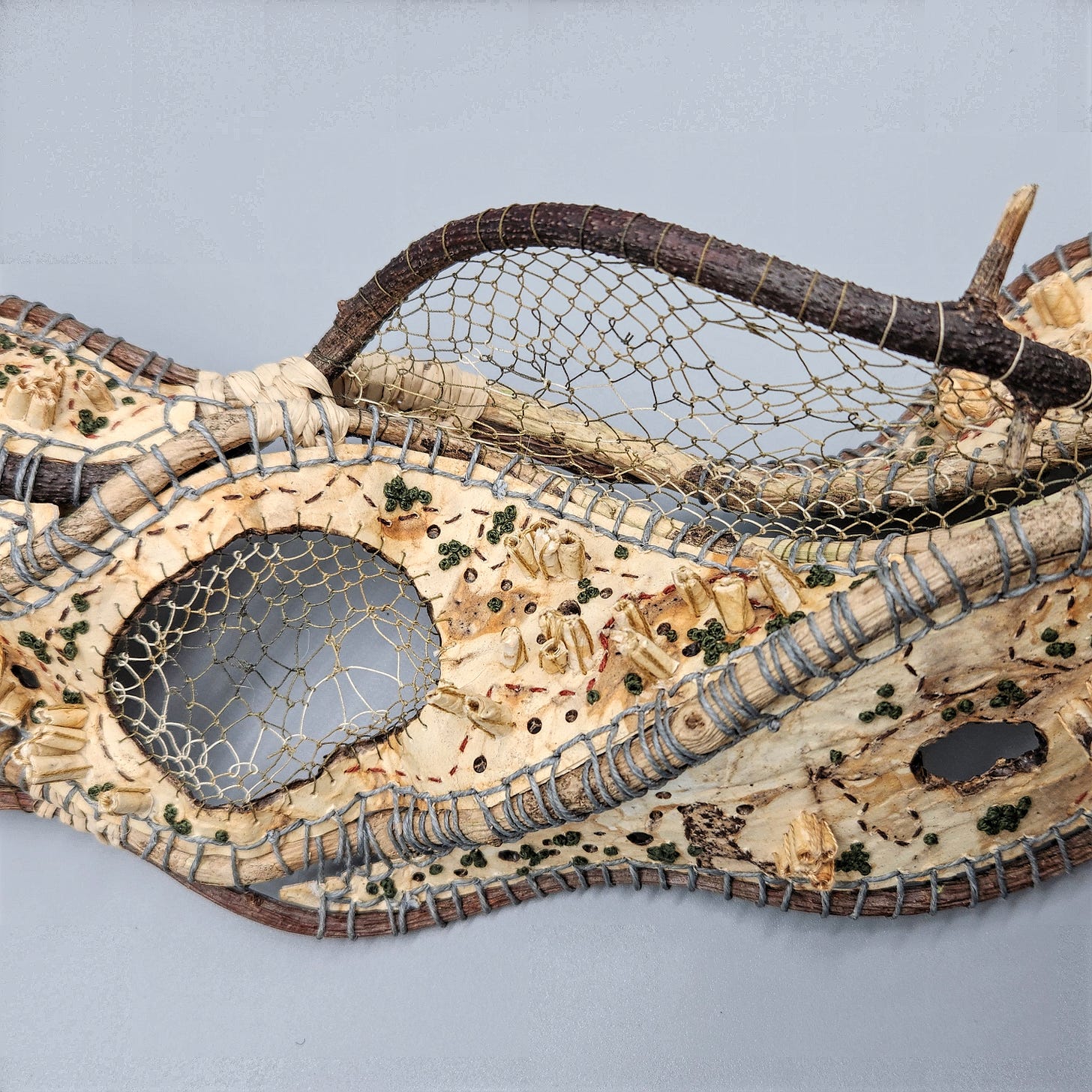
Slowing down inherently allows for cycles of growth and rest, and I was developing trust in the pace of natural things and my own rhythms. I was making discoveries even in the most familiar things. I had deeper insights and was making better choices in both my life and my artwork. The quality of time spent in the studio was deepening as quantity lost its grip.

Working slowly allows the mind to wander, making space for new ideas. While embroidering into my printed papers, especially seeing the threads lie against the marks made with eco-prints, I wondered if I could find a way to make my own embroidery thread colors, if I could dye them myself, to further deepen the connection to place, to create threads that matched the papers I was stitching – in both color and meaning. I decided to learn to dye my own embroidery threads using natural dyes derived from plants I forage from my yard and woods.
Slowing down further: going back toward the source
This May, the day after my peonies opened in a glorious profusion of fuchsia and pale pink, it rained. The flowers were, of course, flattened, the petals strewn across the sidewalk. I gathered them, added them with water to a small crock pot, and let them soak as a beginning to dyeing some Sashiko cotton threads.
On day one, I soaked the petals in cool water. On day two, I simmered them for an hour, then let them cool and soak again overnight. On day three, I strained out the peony petals, added pre-mordanted cotton Sashiko threads, simmered for another hour, let them cool, and soaked again overnight. On day four, I had achieved a very pale peach color, subtle but beautiful.
I don’t know exactly what I am going to do with the threads. At the moment, they are an end in themselves, a sort of artwork in their own right. It took four days to create this small skein, most of that time waiting, and as I ran it through my fingers, untangling it, it felt precious. Each step of the process, as I document it in photos and notes and journal pages, seems like its own work of art.
“Adopt the pace of nature. Her secret is patience.”
- Ralph Waldo Emerson
The slow process - waiting as it steeped, waiting as it dried, gently untangling it with my fingers - made me hesitant to wrap it around the kind of plastic thread bobbin I use for the rest of my embroidery floss. I reached instead for a collection of old wooden thread spools, chose a beautiful one of medium size, and wound the dyed thread carefully, securing the loose end with a straight pin.
As I wound it, and as I created a label from a leftover piece of kraft paper and antique string, I became aware of a feeling of care, of handling prized material. I never feel this same level of care when handling any of my scores of skeins of DMC floss in my collection (though I probably should). The slow pace and the intention in the making of the dyed thread carried through to magnify my regard for this small bit of material. This emotion and meaning will pass into whatever artwork is embroidered with this thread.
Handmade materials embody preciousness due to the time, effort, and personal touch invested in their creation. There is a connection to the past, a story that is known in its entirety about its making, a tangible expression of care and curiosity that mass-produced items lack.
“It is the antithesis of a throw-away culture: craft items are meant to be treasured, and every piece has a story behind it.”
- Kara Leigh Ford, British ceramicist
There’s something about slowing down, about participating in the entire process, often with no particular (and no monetary) agenda that imbues the final materials with an almost magical quality. There is time to appreciate, experience and absorb the wonder that underlies the very nature of creating something from (almost) nothing. Slowing down enough to actively shape my tools and techniques, to take time to wonder and to ask What if?, to journal and read, to explore and experiment, to go as close to the source as possible in choosing materials, is strengthening and deepening my art practice.
Working slowly, including foraging for and making my own materials to use in my art, is a journey of discovery: of meaning, of self, and definitely of place. Simple pleasures, like winding a newly dyed thread onto an antique wooden spool, become richer and more meaningful. And all of this became possible because I was forced to slow down.
I don’t have to search for meaning in the artworks made from these slow materials. The slowness and deliberateness leaves space for meaning to emerge on its own, and I just build upon it. The story of the materials, the story of the place from which they originate, underlies all the rest. Now that I have surrendered to this slowness, I feel less stressed and more at peace when I am in the studio. And my body is happier, too.
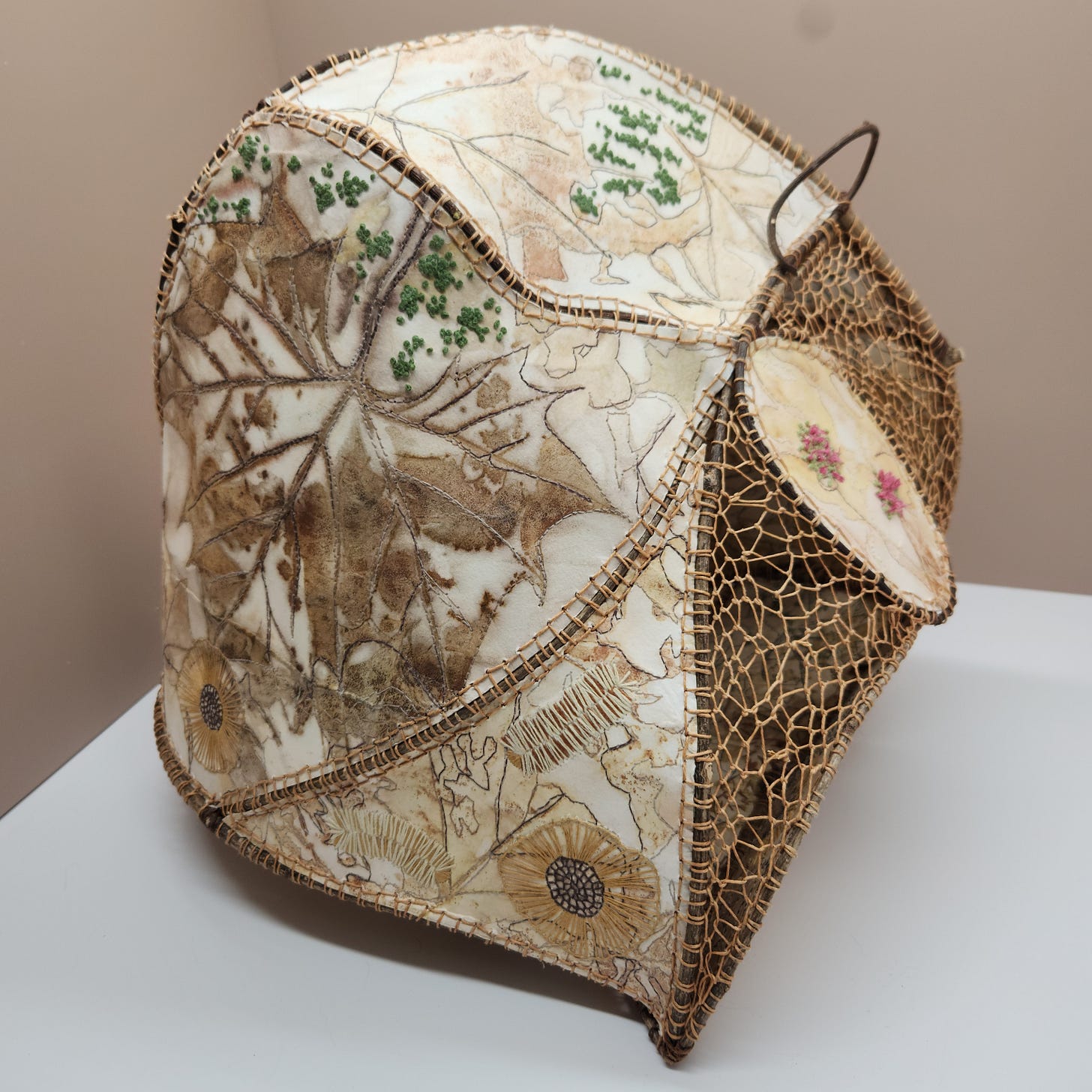
You can see more of my work at my website.
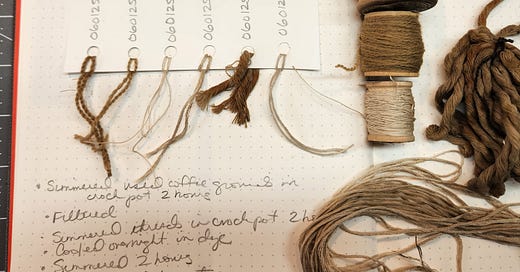


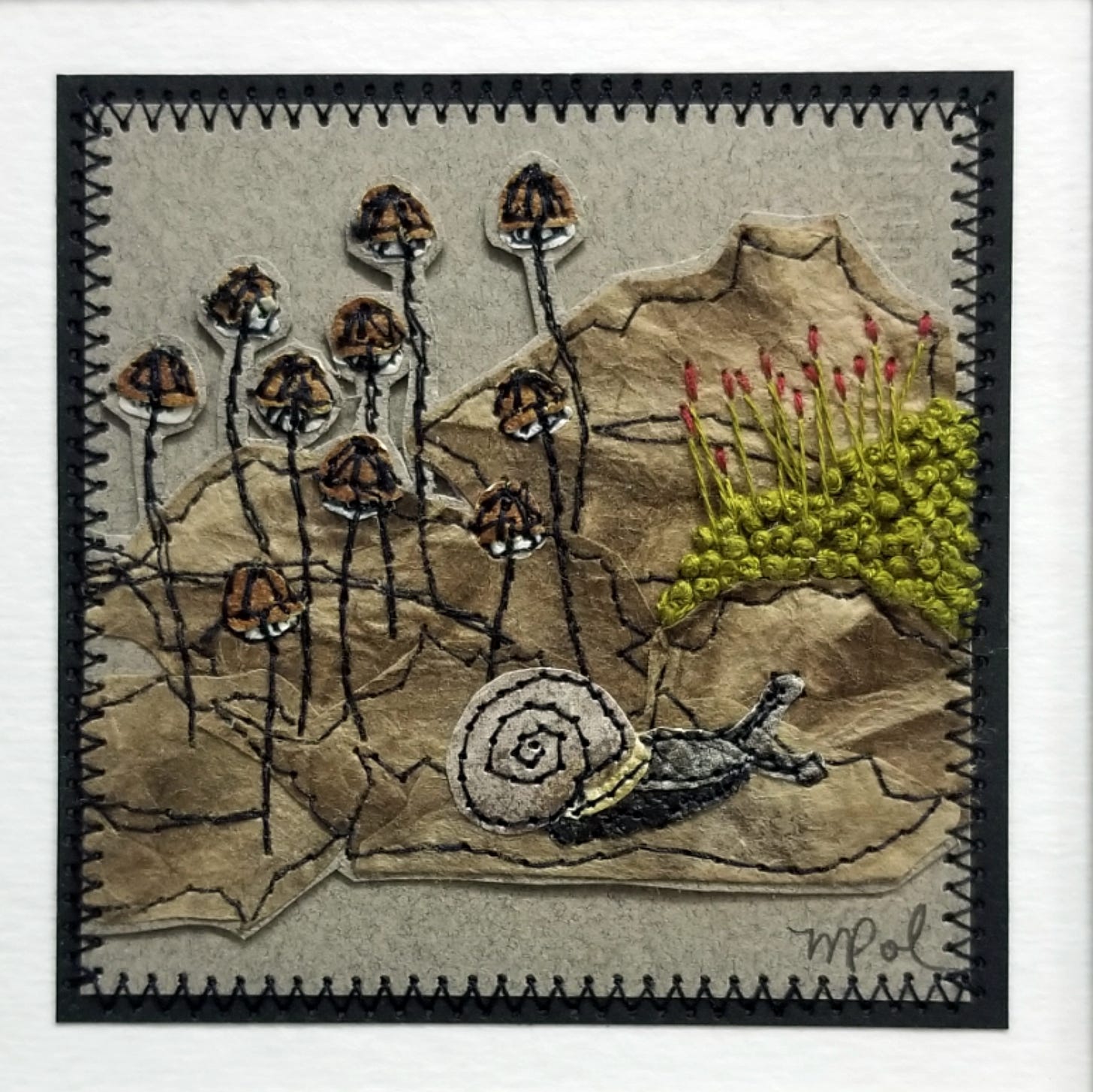

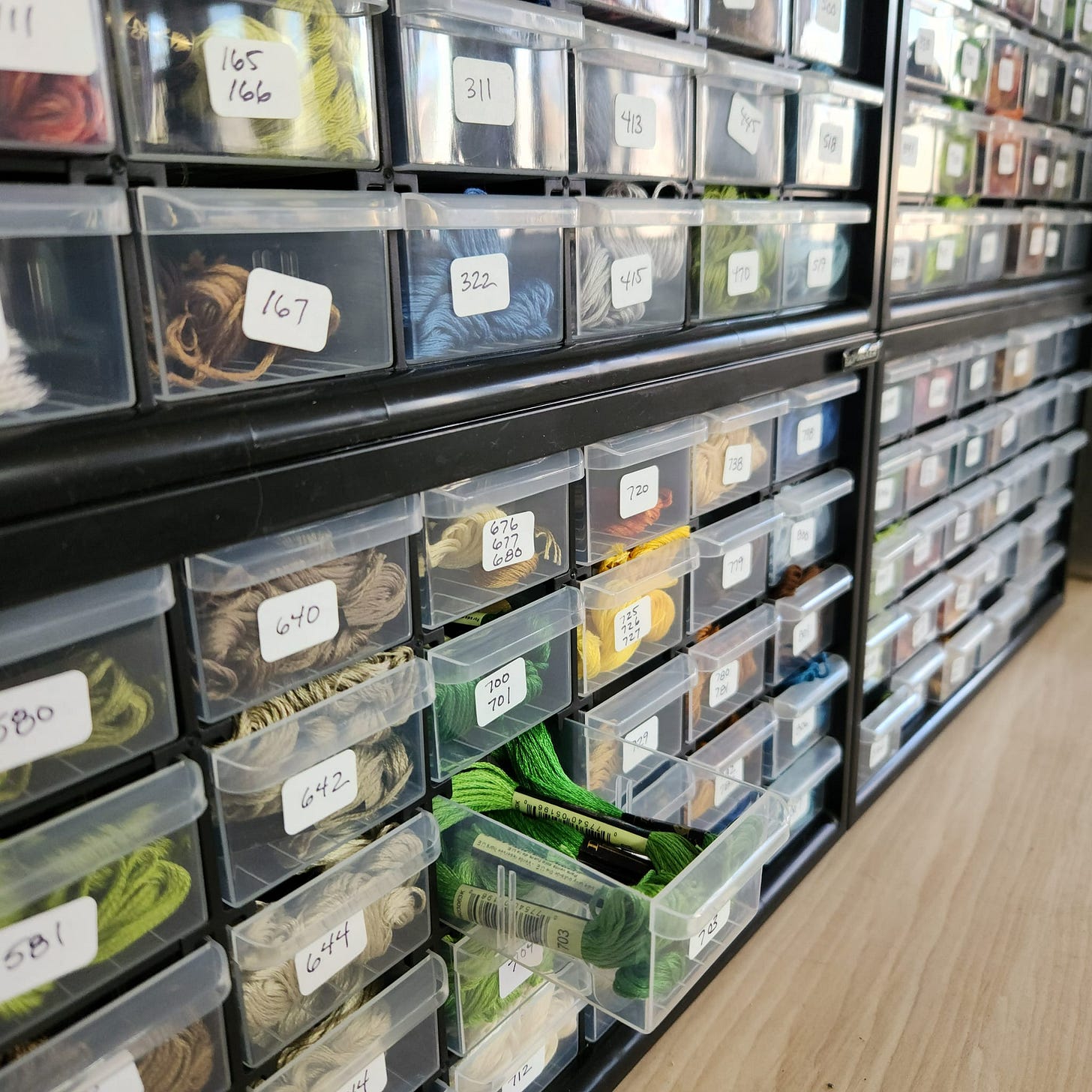
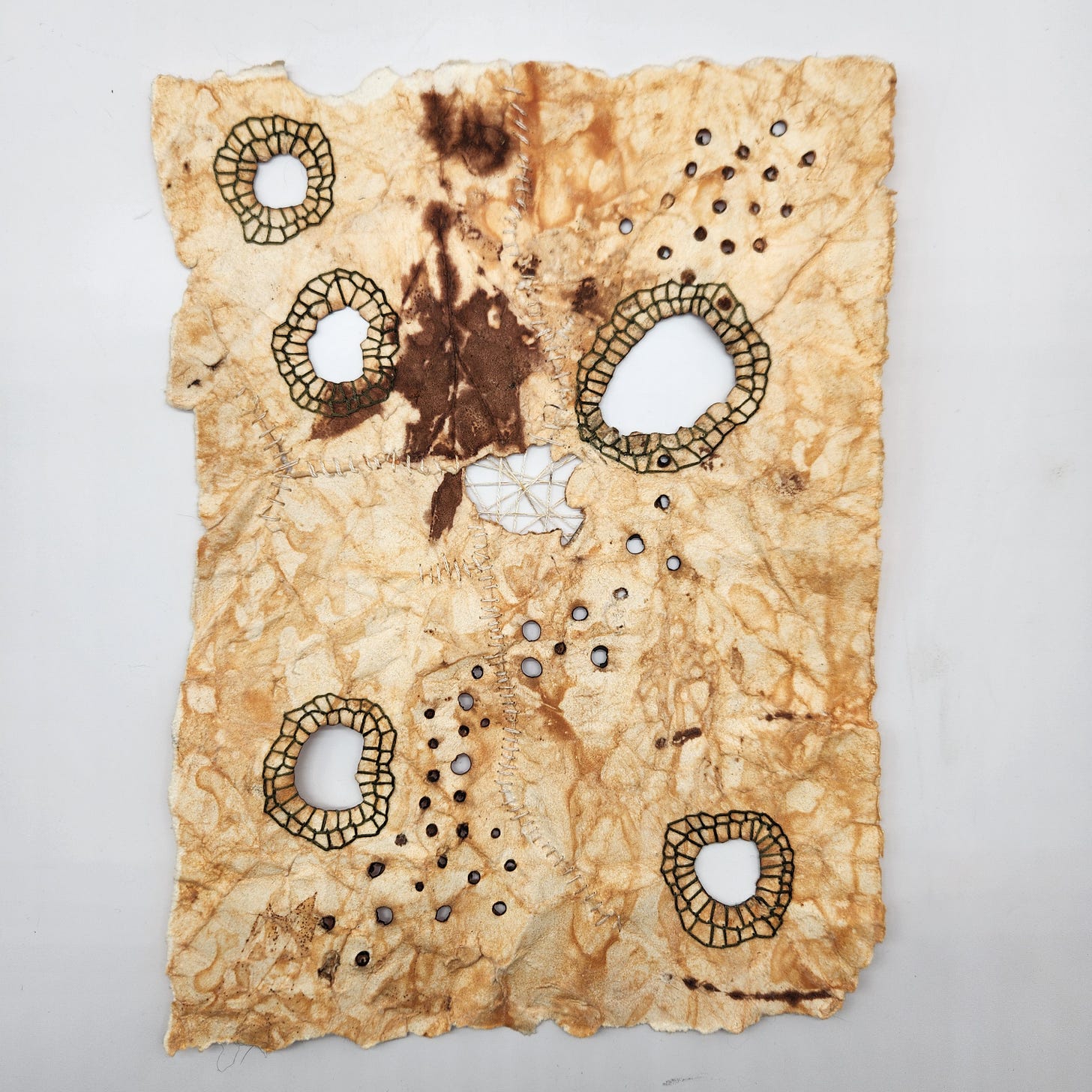
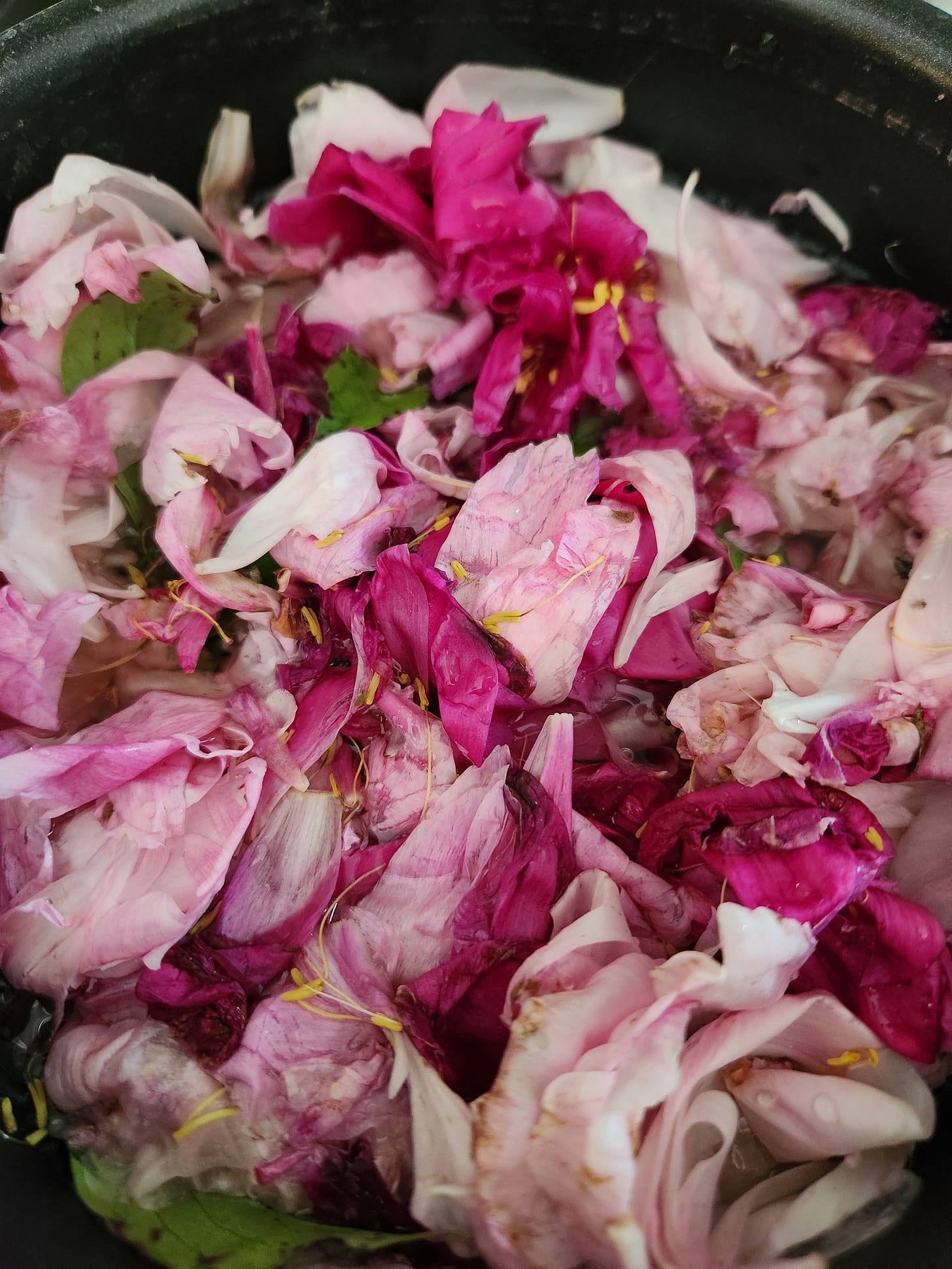

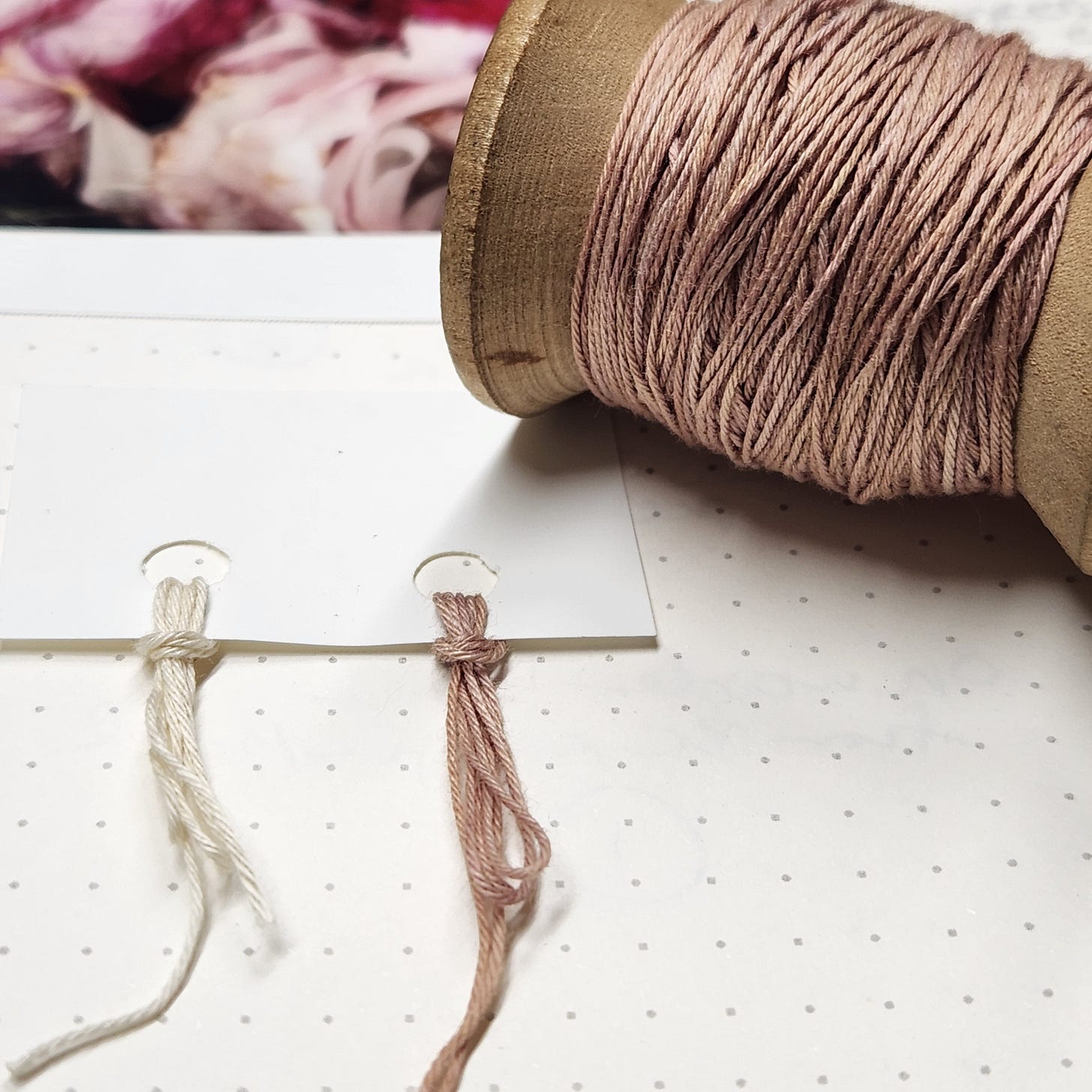

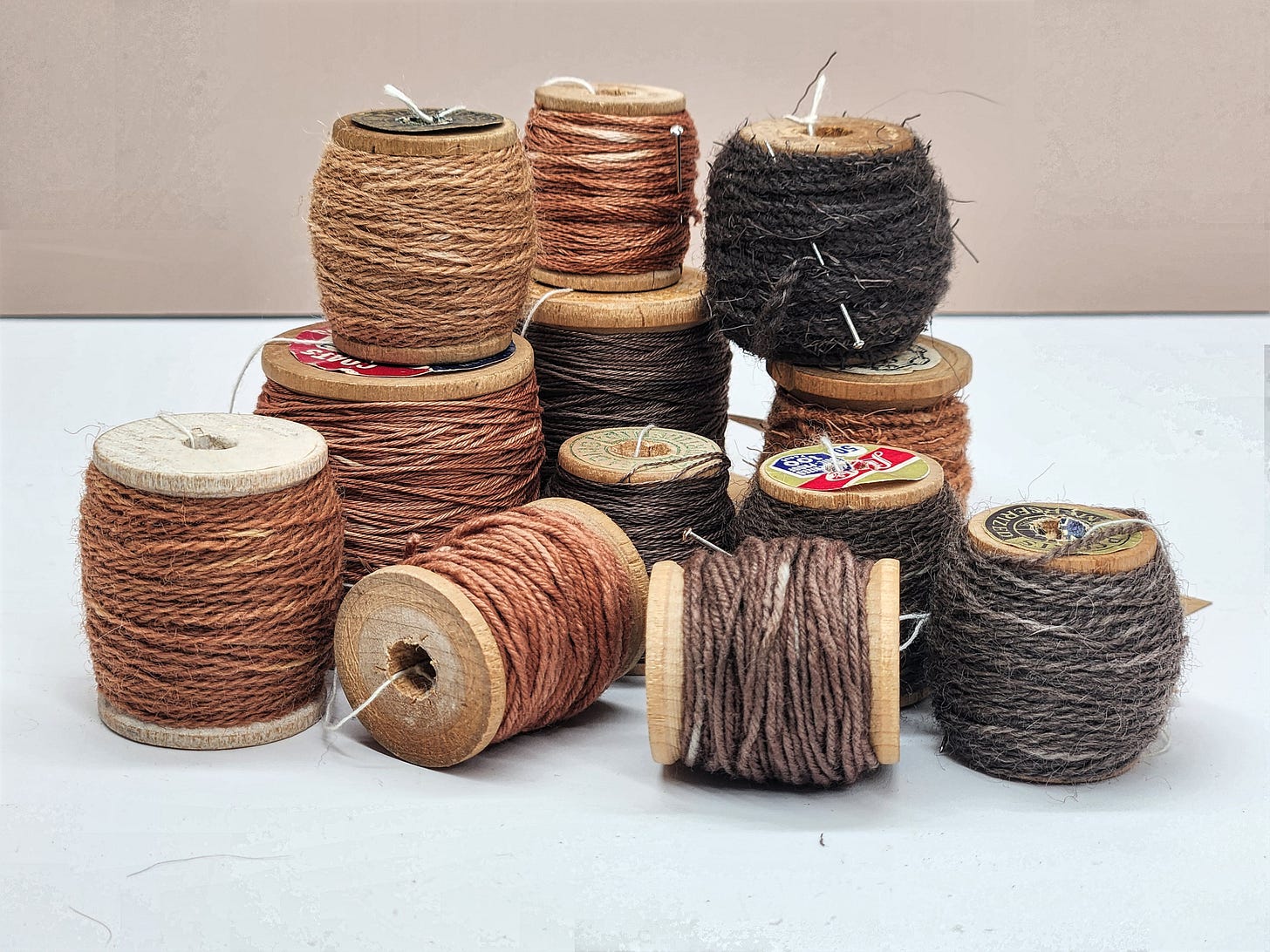
Gorgeous! Of course, the approach of slowing down applies to so much ‘art’ and what a pleasure to see what you brought to your own! 😍
Your work is so beautiful. It’s over a year since I was last able to walk to the village woods. I really miss scavenging for materials and tools both outside and in charity shops. At the moment I’m even struggling to collect plant material from the garden to use. Just have to keep hoping that the slower I go the more I might improve, or at least not get worse again. I have at least managed a bit of solar dyeing, just throwing a load of things in a plastic lidded container and seeing what happens. That’s definitely a slow process 😁.